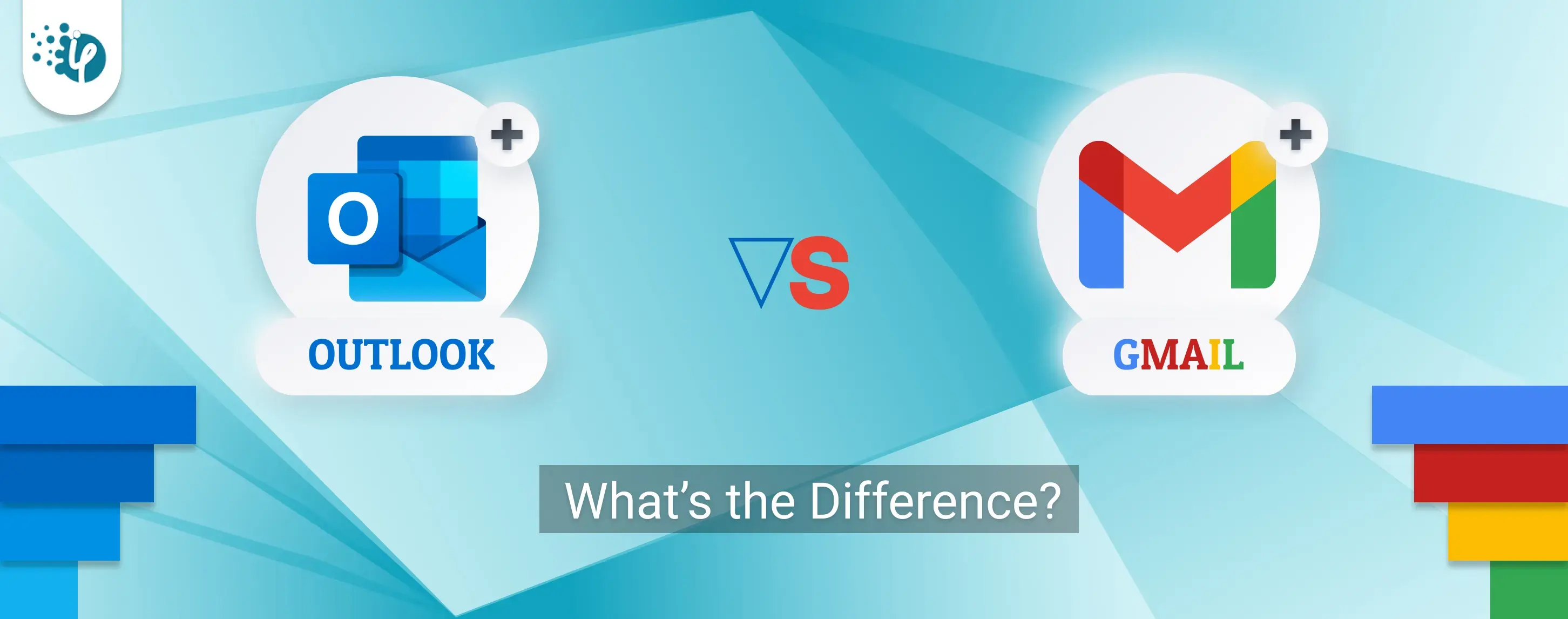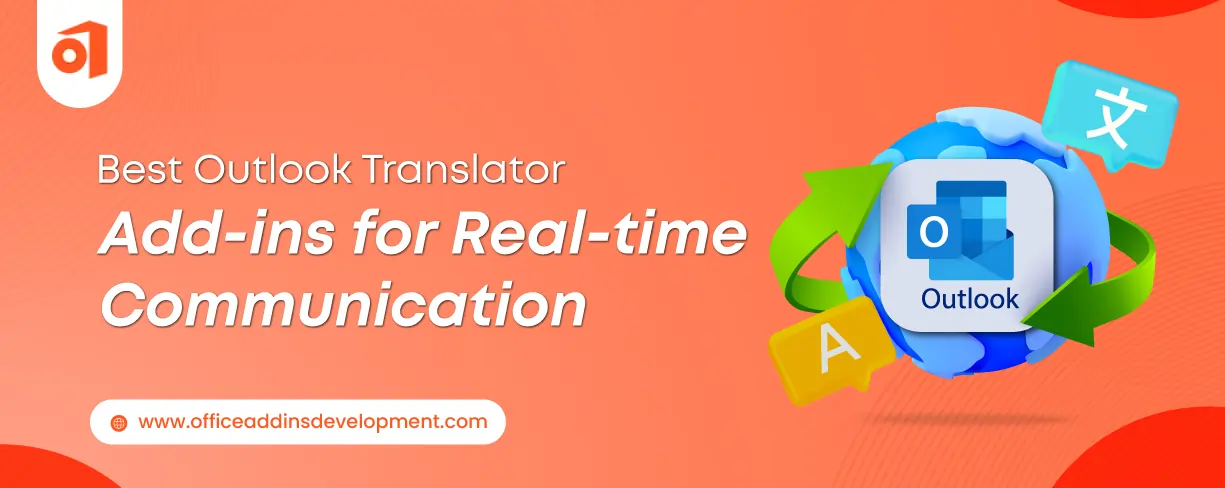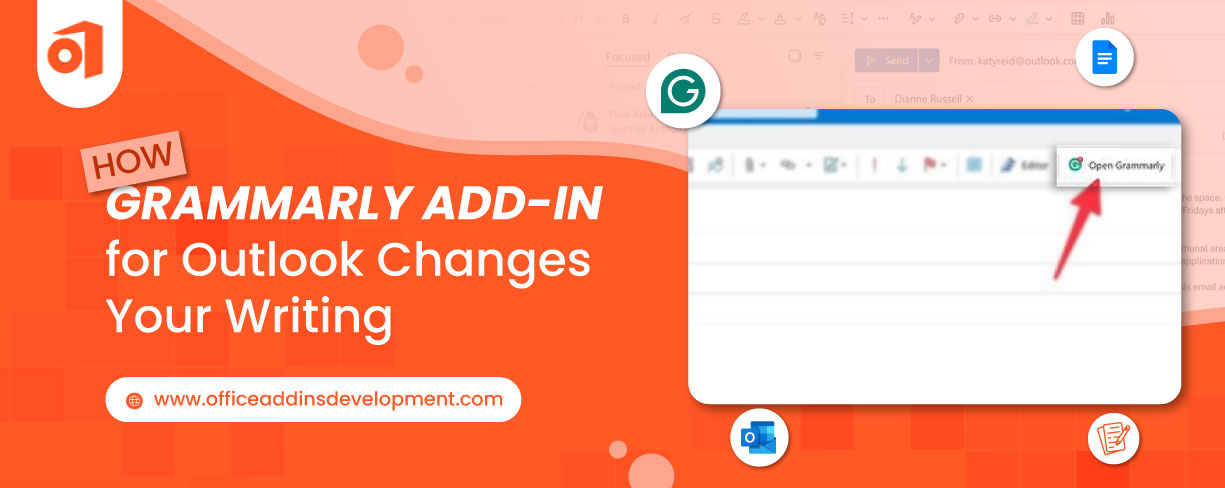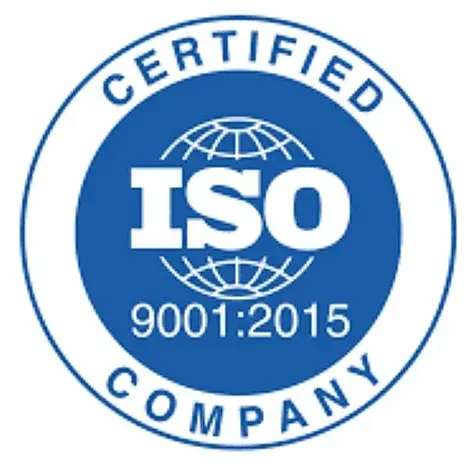Outlook and Gmail are the two most popular email providers worldwide. So there are wide arrays of add-ons available for both email providers. Outlook add-ins and Gmail add-ins both work to enhance the capabilities of their respective email clients. However as both tools are built on different platforms, these both tools differ in many ways from each other.
So, it becomes a pain point for users to make a selection out of these two options. In this blog, we will explore the key differences between Outlook add-ins and Gmail add-ins. Let's start with a short intro to get a precise understanding of add-ins.
Overview of Outlook Add-ons
Outlook Add-ins are tiny tools that extend the capabilities of Microsoft Outlook, allowing users to get a tailor-made experience and helping to improve productivity. By opting for Outlook Add-ins development , clients can add new features to Outlook, and it can be integrated with other systems or apps as well.
Using the Outlook plug-ins, one can easily manage emails and calendars more efficiently, automate specific tasks, or integrate this tool with CRM systems to track progress. In short, it lets you perform a number of tasks.
Top 10 Benefits of Custom Outlook Add-ins Development
- Streamline tasks with custom Outlook Add-ins for efficiency.
- Personalize productivity and enhance the email experience.
- Integrate seamlessly with external apps for a unified platform.
- Foster real-time collaboration with tailored Add-ins.
- Save time by automating repetitive tasks.
- Create bespoke solutions for specific business needs.
- Elevate communication with tracking and analytics.
- Ensure easy data access with seamless database integration.
- Prioritize compliance and security.
- Stay current with evolving technology for a modern user experience
Looking for the best Word Add-ins development company?
Overview of Gmail Add-ons
Gmail Add-ons, referred to as Gmail extensions as well are tools that work to enhance the functionality of Gmail. Using the add-ons, users can customize their email workflow and access multiple features directly under the Gmail interface. With Gmail add-ins development, clients can maximize their productivity by automating repetitive tasks. It can also be integrated with Google Drive and Calendar to get the best experience. .
There are a variety of tools available ranging from task automation to project management aids. Consumers can search for specific extensions from Google Workspace and easily install them.

Top 10 Benefits of Custom Gmail Add-on Development
- Enhance Gmail efficiency with custom Add-ons for streamlined tasks.
- Personalize productivity and tailor the email experience.
- Seamlessly integrate with external apps for a unified platform.
- Foster real-time collaboration through tailored Gmail Add-ons.
- Save time by automating repetitive tasks within Gmail.
- Create bespoke solutions for specific business requirements.
- Elevate communication with tracking and analytics features.
- Ensure easy data access by seamlessly integrating with external databases.
- Prioritize compliance and security in Gmail workflows.
- Stay current with evolving technology for a modern Gmail user experience.
Outlook Add-ins vs Gmail Add-ins: Key Differences to Note
From features to storage and pricing, both extensions differ in many ways. Let's explore the key differences between Outlook Add-ins vs Gmail Add-ons development to help you make a great option for your email requirements.
Features: Outlook Add-ins vs Gmail Add-ins
Both email providers offer the same features such as calendar, video meetings, group messages, filter files, email scheduling, etc. However, there are myriad distinct functionalities available like email snooze, text suggestions, categories and labels, etc.
However, Gmail makes it easy for users to categorize and label incoming mail while Outlook proffers a bit restricted approach for filing. Pros and cons are on both sides so it depends on your requirement to pick one option.
User Interface difference
We can notice remarkable differences when it comes to comparing the design of these two tools. Outlook stands ahead as it offers minimalist infrastructure although it is a bit cramped. So, it has a more formal infrastructure with two views “focused” and “other” as it filters out important and less important mail for you.
On the flip side, Gmail proffers a streamlined interface with easy navigation that lets you easily scroll your inbox. With the search box, you can easily filter out the conversation you are looking for. With a sleek design, Gmail lets you flip through multiple profiles without any trouble.
Integration differences in Outlook and Gmail
Outlook add-ins are designed for integration with Outlook which is part of the Microsoft 365 suite of apps. So, this add-on can be used across multiple versions of Outlook be it Windows, Outlook for Mac, Web version, and mobile apps. Outlook extension can be integrated with other Microsoft services and tools like OneDrive, Teams, and SharePoint making it feasible for you to use the features at its best.
Embrace innovation and agility with our Google sheets Add-on development company!
Gmail extensions are built to work within the Gmail ecosystem which is a part of Google Workspace. These extensions work on the web version of Gmail and in particular scenarios, it works on Gmail for mobile apps too. Gmail add-ins can be integrated with Google Drive, Google Calendar, Google Meet, etc services.

Level of Security
Outlook and Gmail extensions have some similar security features such as multi-factor authentication, Spam detection, and encryption in transit. Outlook add-ins consist of levels of security layers and end-to-end encryption capabilities.
On the other hand, it's important to consider a reputable source while downloading an extension for Gmail. So, it's important to look for the reviews and permissions while downloading an extension for Gmail. For enhanced security, clients can opt for custom Gmail Add-ons development that takes great care of security and protects you from malware.
Customization options
Customization is available in both of tools however Gmail proffers more possibilities for customization compared to Outlook. Customization can be done for specific tasks like messaging, appointments, project management, etc.
In the end, it's best to consider your customization requirements first and afterward approach the reputable Gmail Add-ins development partner to execute the project.
Gmail Add-on vs Outlook Add-in: Cost Structure
If we talk about the cost of Outlook and Gmail platforms, then these email providers are free to use for individual users. Outlook is free to operate on a browser however but if you want to use the app then you are required to get Office 365 which costs around $60 a year. With this, you can also get access to Word, Excel, PowerPoint, and other office programs.
Talking about Gmail, individuals can use it for free but if you opt to use it for work then you need to acquire a paid account. There are four plans available for businesses which include business standard, starter, plus, and enterprise.
According to this, the cost differs for Gmail extension development and Outlook add-ins development as the software is built from scratch. Moreover, there are a number of paid extensions available for both email providers where pricing differs in the manner of their functionality.
Development Approach
Outlook add-ins are developed using HTML, CSS, and JavaScript. However, one can make use of myriad frameworks for specific requirements. It can be deployed to an individual, organization, or the Office Store.
Gmail add-ons are built using Google’s App Script or modern web technologies including HTML, CSS, and JavaScript. Individual users can install these extensions from Google Workspace Marketplace or directly from the Gmail add-on settings.
Outlook Add-ins vs Gmail Add-ins: Which One to Choose?
1. Identify Your Needs: First, consider identifying your requirements like what specific functions you require from an add-in, and check if they are available in your selected add-on or not.
2. Integration With Existing Ecosystem: When you are an old user of MS Office or G Suit, then you have to look for those add-ons that integrate well with your current system or software. This is essential before deciding on Office 365 Ad-ins development.
3. Cost Structure: Here you have to look for the total cost of ownership as there are payments associated with subscriptions. So, consider all the recurring fees and decide which provider suits your budget.
4. Security and Compliance: Security factors remain crucial to consider so explore which platform offers the security features and compliance standard specifically required by your business.
5. User Preference: At last think about user preference especially when you are working in an organization it is necessary to consider the team's preferences. Likewise, you can make a choice to get the best results since the team is already familiar with the platform so it will be best for them to work in the same environment with add-ons.
There's still a lot to consider when trying to figure out the main differences between Outlook Add-in and Gmail Add-on. But here are the most critical points to remember. I believe you now have a good idea of what's important when deciding which one to choose.
Final Verdict
In both cases, the add-ins are designed to run seamlessly within the email client, offering additional features such as CRM integration, email tracking, enhanced scheduling, etc. Choosing between Outlook add-ins and Gmail add-ins depends on various factors such as personal email client preference, certain requirements of the organization, and the specific feature-rich you are looking for.
Both Gmail and Outlook add-ons development have their strengths and choosing between these two entirely depends on which ecosystem aligns best with your business operations and user preferences. While making a choice, consider the above-mentioned factors and decide which option satisfies your necessities.















